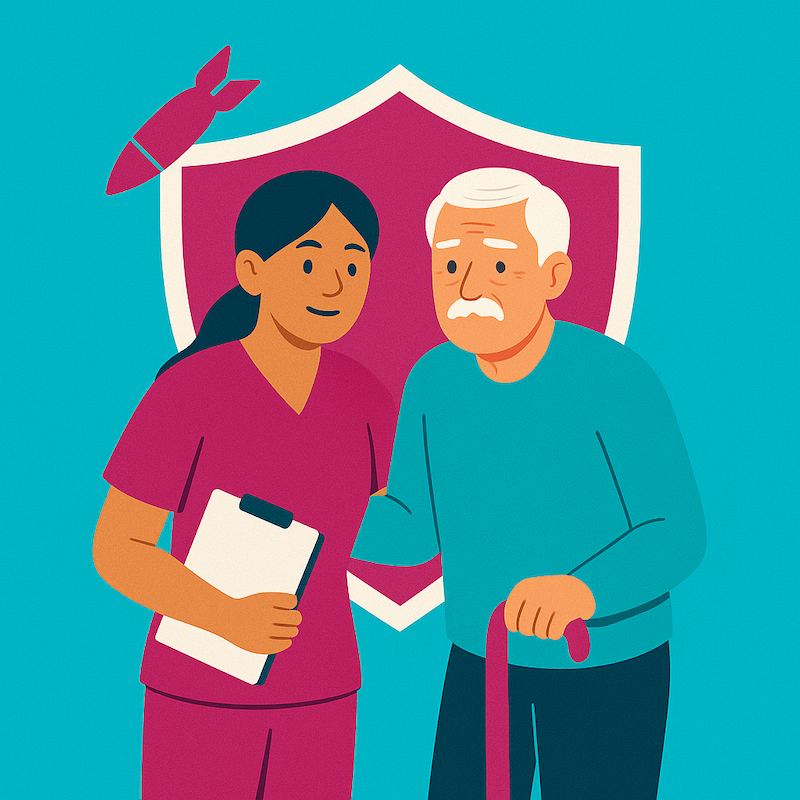Effective Strategies for Managing Challenging Behaviors in Elderly Patients
iSavta | 28.01.2024

As individuals age, they may experience a variety of physical, cognitive, and emotional changes that can lead to challenging behaviors. These behaviors can pose significant challenges for healthcare professionals and family members who provide care for elderly patients. However, with proper understanding, empathy, and effective strategies, it is possible to manage and respond to these behaviors in a way that promotes the well-being and quality of life of elderly patients. In this article, we will explore some practical tips and techniques for handling challenging behaviors in elderly patients.
Promote effective communication:
One of the key elements in managing challenging behaviors is establishing effective communication with elderly patients. It is important to remember that some behaviors may be a result of frustration, confusion, or difficulty expressing their needs. Here are a few strategies to improve communication:
- Use simple and clear language: Speak slowly and use simple sentences to ensure understanding.
- Active listening: Show genuine interest and attention when listening to the patient. This helps them feel valued and understood.
- Non-verbal cues: Pay attention to the patient's body language, facial expressions, and tone of voice. This can provide valuable insights into their feelings and emotions.
Understand the underlying causes:
Challenging behaviors in elderly patients can stem from various factors, including pain, medication side effects, cognitive decline, or unmet needs. It is crucial to identify and address the underlying causes to effectively manage these behaviors. Consider the following approaches:
- Regular assessments: Regularly assess the patient's physical and mental health to identify any changes or potential issues.
- Collaborate with the healthcare team: Work closely with healthcare professionals to review medications and potential side effects that could contribute to challenging behaviors.
- Meet basic needs: Ensure that the patient's basic needs, such as nutrition, hydration, and comfort, are met. Sometimes, seemingly challenging behaviors may be a result of unmet needs.
Establish a predictable routine:
Maintaining a predictable routine can help reduce anxiety and confusion in elderly patients, thereby minimizing challenging behaviors. Creating a structured environment provides a sense of security and familiarity. Consider these strategies:
- Consistent schedule: Establish a daily routine for activities such as meals, medication, exercise, and leisure time.
- Visual cues: Use visual aids such as calendars, clocks, and signs to help patients understand and anticipate daily activities.
- Familiar environment: Arrange the living space to reflect the patient's preferences and keep familiar items within reach. This can provide a sense of comfort and stability.
Practice empathy and validation:
Elderly patients may exhibit challenging behaviors as a means of expressing frustration, fear, or discomfort. Responding with empathy and validation can make a significant difference in managing these behaviors effectively. Some tips to consider:
- Acknowledge emotions: Validate the patient's feelings and let them know you understand their concerns.
- Reassurance: Provide reassurance and comfort to alleviate anxiety or fear.
- Redirect and distract: If a challenging behavior arises, redirect the patient's attention to a more positive or engaging activity.
Utilize therapeutic activities:
Engaging elderly patients in meaningful activities can help reduce boredom, restlessness, and disruptive behaviors. Tailor activities to their interests, abilities, and limitations. Some examples include:
- Creative outlets: Encourage participation in art, music, or gardening activities that promote self-expression and relaxation.
- Cognitive stimulation: Engage in puzzles, word games, or reminiscence therapy to stimulate cognitive function and memory.
- Physical exercise: Encourage regular physical activity suitable for the patient's abilities to promote overall well-being and reduce agitation.
Conclusion:
Handling challenging behaviors in elderly patients requires a compassionate and holistic approach. By improving communication, understanding the underlying causes, establishing routines, practicing empathy, and utilizing therapeutic activities, healthcare professionals and caregivers can effectively manage and respond to these behaviors. Remember, each individual is unique, and it may take time and patience to find the most suitable strategies. By prioritizing the well-being and quality of life of elderly patients, we can create a supportive environment that promotes their overall health and happiness.











